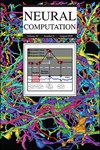Generalized Low-Rank Update: Model Parameter Bounds for Low-Rank Training Data Modifications
IF 2.7
4区 计算机科学
Q3 COMPUTER SCIENCE, ARTIFICIAL INTELLIGENCE
引用次数: 0
Abstract
In this study, we have developed an incremental machine learning (ML) method that efficiently obtains the optimal model when a small number of instances or features are added or removed. This problem holds practical importance in model selection, such as cross-validation (CV) and feature selection. Among the class of ML methods known as linear estimators, there exists an efficient model update framework, the low-rank update, that can effectively handle changes in a small number of rows and columns within the data matrix. However, for ML methods beyond linear estimators, there is currently no comprehensive framework available to obtain knowledge about the updated solution within a specific computational complexity. In light of this, our study introduces a the generalized low-rank update (GLRU) method, which extends the low-rank update framework of linear estimators to ML methods formulated as a certain class of regularized empirical risk minimization, including commonly used methods such as support vector machines and logistic regression. The proposed GLRU method not only expands the range of its applicability but also provides information about the updated solutions with a computational complexity proportional to the number of data set changes. To demonstrate the effectiveness of the GLRU method, we conduct experiments showcasing its efficiency in performing cross-validation and feature selection compared to other baseline methods.广义低秩更新:低秩训练数据修改的模型参数界。
在这项研究中,我们开发了一种增量机器学习(ML)方法,当添加或删除少量实例或特征时,该方法可以有效地获得最优模型。这个问题在模型选择中具有实际意义,例如交叉验证(CV)和特征选择。在被称为线性估计量的ML方法中,存在一种高效的模型更新框架,即低秩更新,它可以有效地处理数据矩阵中少量行和列的变化。然而,对于线性估计量之外的ML方法,目前还没有一个全面的框架可以在特定的计算复杂度内获得关于更新解决方案的知识。有鉴于此,我们的研究引入了一种广义低秩更新(GLRU)方法,该方法将线性估计量的低秩更新框架扩展到ML方法,该ML方法被公式化为一类正则化经验风险最小化,包括常用的方法,如支持向量机和逻辑回归。所提出的GLRU方法不仅扩大了其适用范围,而且还提供了关于更新的解决方案的信息,其计算复杂度与数据集变化的数量成比例。为了证明GLRU方法的有效性,我们进行了实验,展示了与其他基线方法相比,GLRU方法在执行交叉验证和特征选择方面的效率。
本文章由计算机程序翻译,如有差异,请以英文原文为准。
求助全文
约1分钟内获得全文
求助全文
来源期刊

Neural Computation
工程技术-计算机:人工智能
CiteScore
6.30
自引率
3.40%
发文量
83
审稿时长
3.0 months
期刊介绍:
Neural Computation is uniquely positioned at the crossroads between neuroscience and TMCS and welcomes the submission of original papers from all areas of TMCS, including: Advanced experimental design; Analysis of chemical sensor data; Connectomic reconstructions; Analysis of multielectrode and optical recordings; Genetic data for cell identity; Analysis of behavioral data; Multiscale models; Analysis of molecular mechanisms; Neuroinformatics; Analysis of brain imaging data; Neuromorphic engineering; Principles of neural coding, computation, circuit dynamics, and plasticity; Theories of brain function.
 求助内容:
求助内容: 应助结果提醒方式:
应助结果提醒方式:


